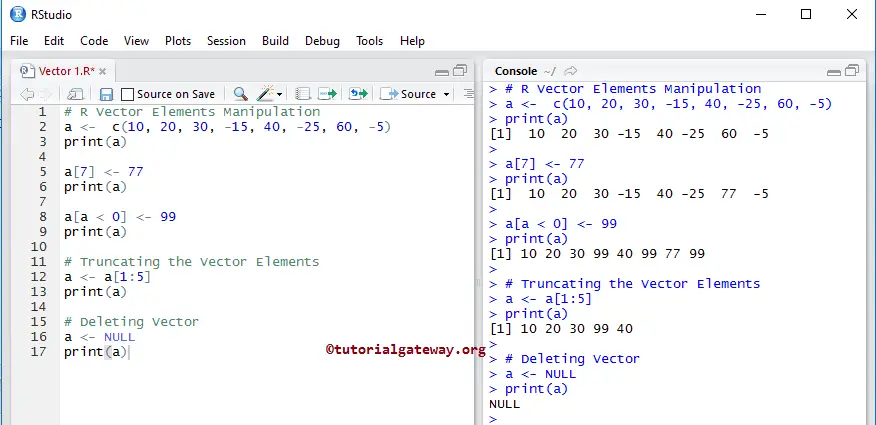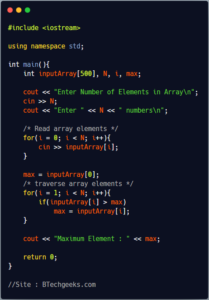

We can use the techniques discussed above to access specific elements and modify them. We can modify a vector using the assignment operator. This type of indexing is useful when dealing with named vectors. In the above example, the expression x>0 will yield a logical vector (FALSE, FALSE, FALSE, TRUE) which is then used for indexing. This useful feature helps us in filtering of vector as shown below. When we use a logical vector for indexing, the position where the logical vector is TRUE is returned. > x # real numbers are truncated to integers Here are some examples that show how elements of vectors can be obtained by indexing. > x # cannot mix positive and negative integersĮrror in x : only 0's may be mixed with negative subscripts For any given vector it returns a vector with the rank of the first entry. We can also use negative integers to return all elements except that those specified.īut we cannot mix positive and negative integers while indexing and real numbers, if used, are truncated to integers. Before we get started with the motivating dataset, we need to cover the very. We can use a vector of integers as index to access specific elements.

Vector index in R starts from 1, unlike most programming languages where index start from 0. The vector used for indexing can be logical, integer or character vector.

> seq(1, 5, length.out=4) # specify length of the vectorĮlements of a vector can be accessed using vector indexing. Example 1: Creating a vector using : operator > x y seq(1, 3, by=0.2) # specify step size If we want to create a vector of consecutive numbers, the : operator is very helpful. Since, a vector must have elements of the same type, this function will try and coerce elements to the same type, if they are different.Ĭoercion is from lower to higher types from logical to integer to double to character. Vectors are generally created using the c() function. So the first element of the vector object is located at index 0 while the last element is located at the vector size 1 index. So if we have: x <- (2, 4, 6) list <- list (r1 x, r2 pi, r3 month.
#Rcode identify first element of vector how to#
The vector index starts from 0 and ends at the vector size 1 index. R: How to select the first element of one vector inside a list Ask Question Viewed 802 times 0 I would like to replace the first element of my list (a vector) for the first value of that vector. This is the number of elements in the vector and can be checked with the function length(). Since the Vector is an index-based data structure, we can use the Vector get method along with the index to access first and last vector elements. The data types can be logical, integer, double, character, complex or raw.Ī vector’s type can be checked with the typeof() function.Īnother important property of a vector is its length.


 0 kommentar(er)
0 kommentar(er)
